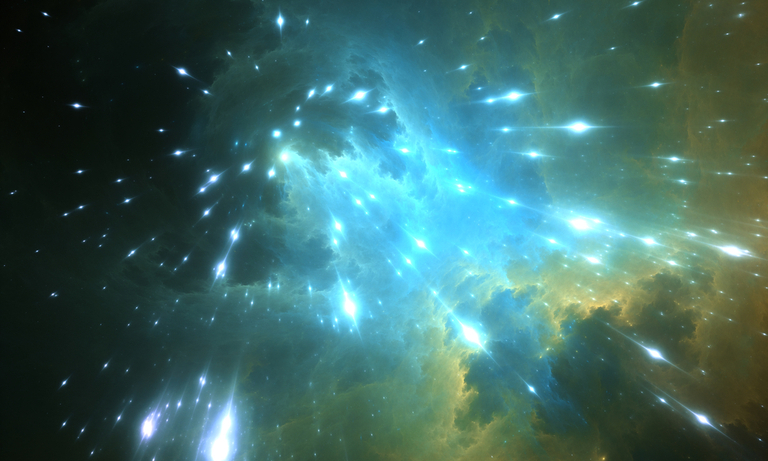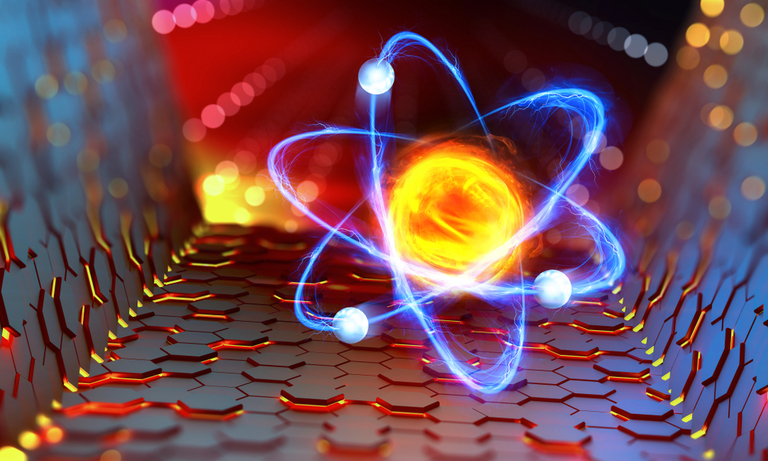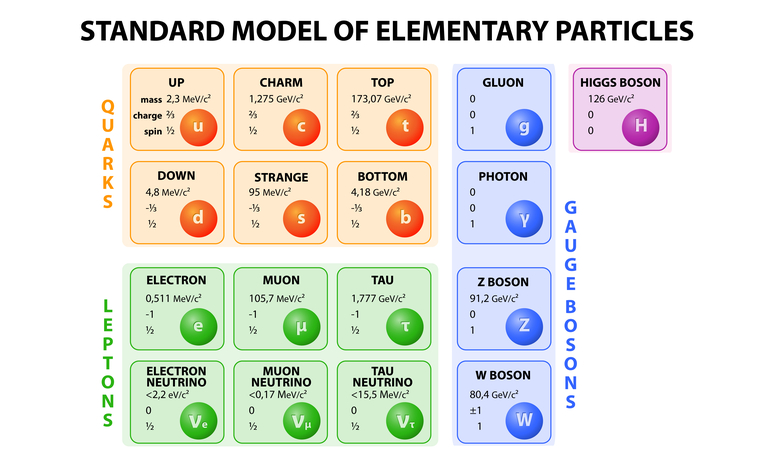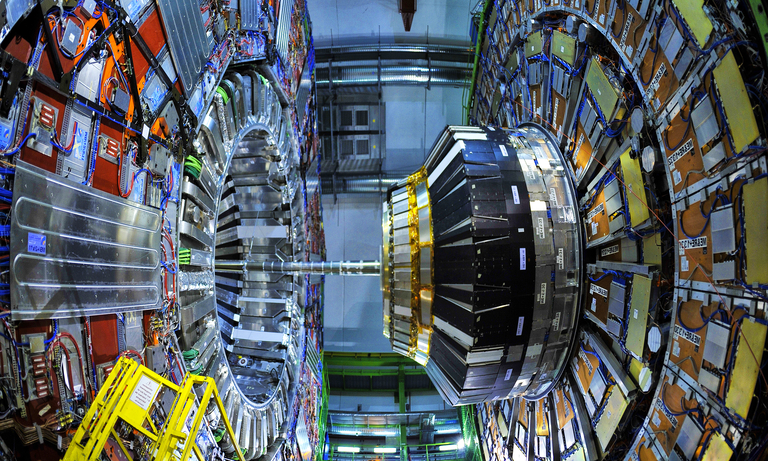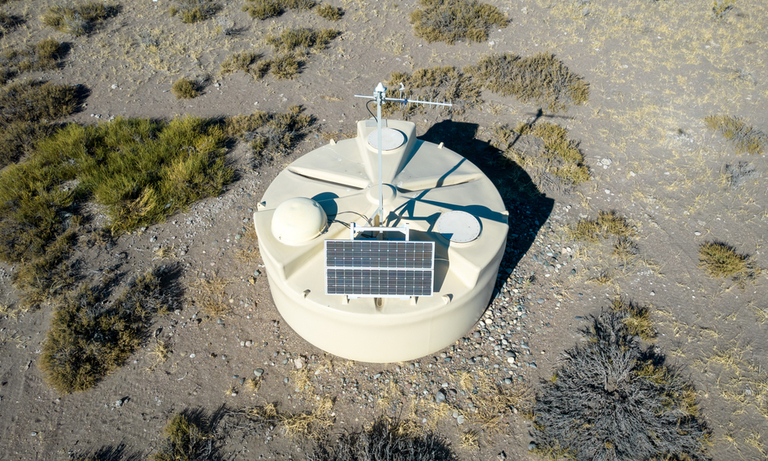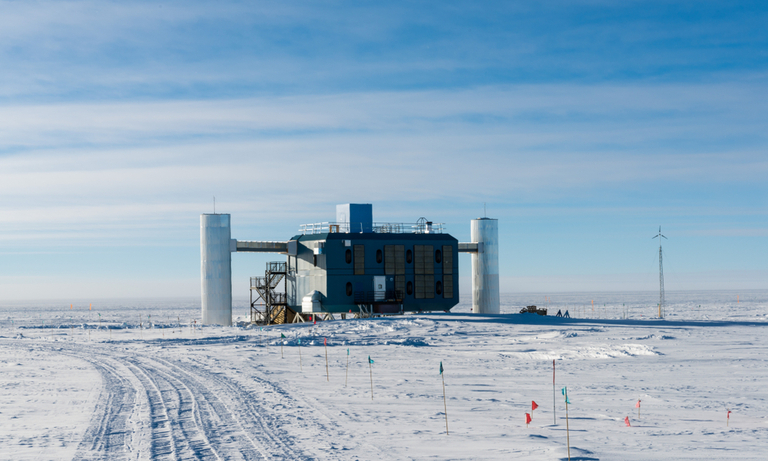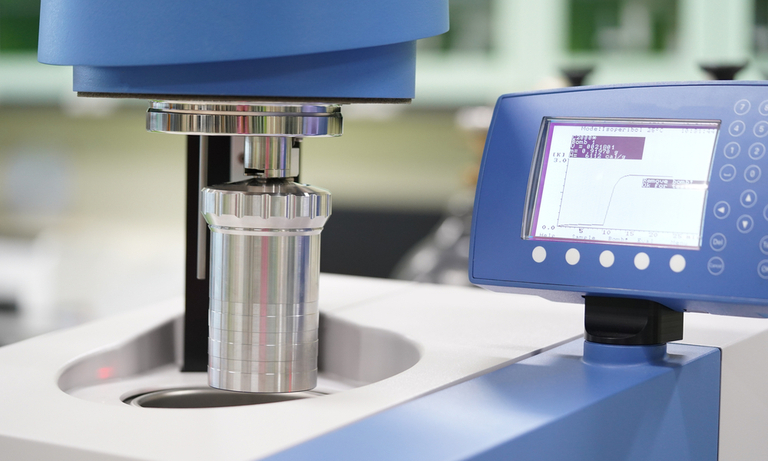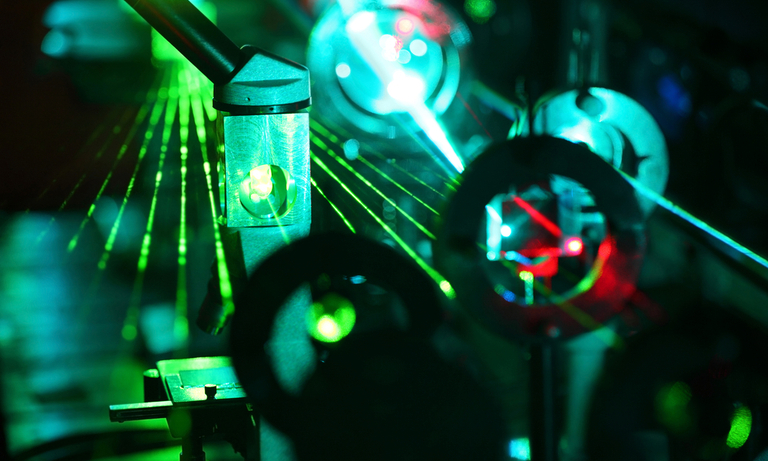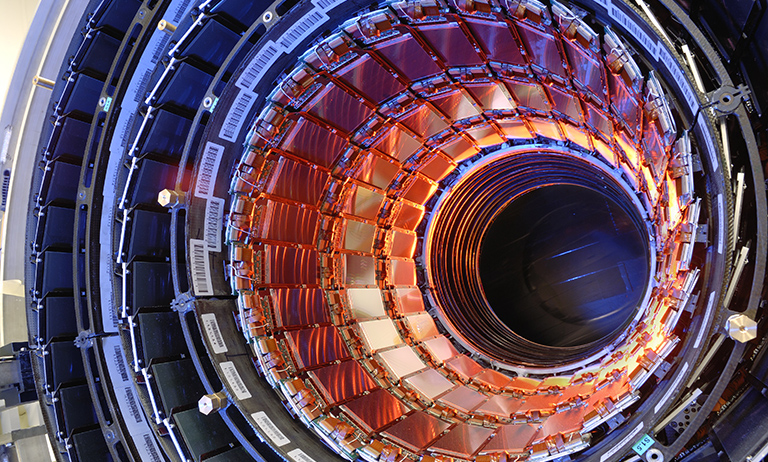Home
Products
Physics Research Field
Type of Experiment
Detector Type
Behind the Science
Tech in a Nutshell
United Kingdom (EN)
Select your region or country.


Standard Model Validation
All matter around us is made of elementary particles governed by four fundamental forces. The Standard Model of particle physics, developed in the early 1970s, explains how these particles and three of the fundamental forces are related to each other.
The fourth interaction, the gravitational force, is negligible in the subatomic world. The elementary particles, the building blocks of matter, are grouped into two families: quarks and leptons.
Each family is composed by three pairs, or generations. The first generation consists of the lightest and most stable particles, the essence of all stable matter. Whilst the heavier and less stable particles, which spontaneously decay to the next most stable level, belong to the second and third generations.
The three forces included in the Standard Models are: the strong force, responsible for the production of protons, neutrons, and nuclei; the electromagnetic force producing atoms; the weak interaction related to the radioactive decay of unstable nuclei. The particle interactions are explained as the exchange of force-carrier particles.
The three forces we are considering have force-carrier particles belonging to the boson family: photons for the electromagnetic force, gluons for the strong force and W and Z bosons for the weak interaction.
The last essential component of the Standard Model is the Higgs boson that is supposed to be responsible for giving particles their masses. For many years, physicists all over the world have tried to observe this particle. On 4 July 2012, the ATLAS and CMS experiments at CERN's Large Hadron Collider (LHC) announced they had each observed a new particle in the mass region around 126 GeV.
This particle is consistent with the Higgs boson described within the Standard Model as the manifestation of the Brout-Englert-Higgs mechanism. Physicists are now studying the characteristics and behaviors of this particle. Moreover, other theories which go beyond the Standard Model, predict that different types of Higgs boson could exist. Further investigations will exclude or confirm this hypothesis. At this moment, the Standard Model is the best description of the subatomic world, but it is not able to explain two phenomena visible in large-scale astronomical measurements; the dark matter and the dark energy.
Dark matter does not absorb, reflect or emit light. The indirect proof of its existence comes from the gravitational effect that it seems to have on visible matter. It is probably made of "supersymmetric particles" and hypothesized particles which are partners of the known particles described in the Standard Model. Dark energy is instead not related to any particle type, but affects the geometry of space and time.
Finally, the Standard Model cannot explain what happened to the antimatter after the Big Bang. Matter and antimatter were created in the same quantity, according to the Big Bang theory. When matter and antimatter meet, they annihilate into photons. However, the existence of our Universe is the proof that part of the matter survived. It is a great mystery how this happened and where the corresponding antimatter ended.
One of the main goals of the LHC, which is currently the largest and most powerful accelerator in the world, and its experiments, is to fill the missing pieces of the Standard Model.
The Higgs Boson Discovery and the CP Violation The LHC accelerates and then collides protons at energies expected to reach 14 TeV.
Considering the high energy of the collisions, the LHC copiously produces the particles which probably populated the very early Universe before nuclei or atoms formed. The LHC provides a means to understand the Universe, the matter which composes it and the phenomena that rules it.
The LHC is a 27-kilometer ring of superconducting magnets with a number of accelerating structures to boost the energy of the particles along the way. Two high-energy particle beams travel in opposite directions inside the accelerator.
The beams collide at four locations where particle detectors are installed: ATLAS, CMS, ALICE and LHCb. The ATLAS and CMS are the two LHC experiments which were designed with the primary goal of searching for the Higgs boson.
The electromagnetic and weak interactions are unified in the electroweak theory. It is difficult to explain how the force carriers of the weak interactions, the Z and W bosons, acquire mass whilst photons, their equivalent for the electromagnetic interactions, remain massless. The symmetry between electromagnetic and weak interaction can break introducing a field that pervades the vacuum. Interacting with the Higgs boson (H), the force-carrier particle of this field, the Z and W bosons and the other fundamental fermions (quark and leptons) described in the Standard Model acquire mass.
The Higgs boson mass is not predicted by theory, but many experiments put constrains on it. Experiments at the LEP collider (e+-e- collider that was installed in the same tunnel currently occupied by the LHC) published a lower bound for the Higgs boson mass: mH > 114.4 GeV.
Instead, at the Tevatron proton–antiproton collider, the mass range 162–166 GeV was excluded with high statistical significance and an excess of events in the range 120–135 GeV was detected. One of the main scientific goals of the LHC was the discovery, or the exclusion of the SM Higgs boson.
Its search is performed in five decay modes, H → γγ, ZZ, W+ W-, τ+τ-, and bb, in the low-mass range from 110 up to 160 GeV. ATLAS and CMS detectors were designed as arrays of particle detection elements to detect the Higgs boson over a broad mass range and to recognize and characterize the largest number of particles that could be potential signals of new physics.
In the same way as ATLAS, the CMS detector is organized as concentric shells with end caps. Each shell is a detector with a specific detection task. CMS means “Compact Muon Solenoid”. It is compact because it contains a really large number of detectors, but it is only 15 metres high and 21 metres long. It was designed to very accurately detect muons and leptons belonging to the second generation. Finally, it has the most powerful solenoid ever made.
It consists of a cylindrical coil of superconducting fibres and generates a magnetic field of around 4 Tesla. The magnet bends charge particles as they move away from the collision point. This is very important to identify the charge of the particles and their momentum.
The Tracker and Calorimeters, the CMS detectors closest to the collision point, are placed inside the coil. The tracker is made entirely of silicon and it consist of about 75 million individual electronic sensors arranged in concentric layers.
A charged particle, crossing the tracker, electromagnetically interacts with the silicon pixel and microstrip detectors and produces a hit. Following the hits, the track of the traversing particle can be identified and from the curvature of the track the particle momentum can be measured.
Another important parameter to understand what happened at the collision point is the energy of the particles produced in the collision. In the CMS detector, there are two calorimeters for measuring particle energy: the Electromagnetic CALorimeter (ECAL) that measures the energy of electrons and photons which lose all their energy within it, and the Hadronic CALorimeter (HCAL) that surround the ECAL and can stop hadrons, particles made up by quarks and gluons.
The most external devices are the detectors designed to observe muons, which are the only charged particles which are not stopped by the calorimeters. The CMS inner tracker is made entirely of arrays of individual silicon wafers. The number of layers is 13, which to out in radius from just outside the beam tube to about 110 cm.
The precision in the bend plane measurement varies from about 10 mm on the inside, where the pixel layers are arrayed, to about 65 mm on the outside using strip layers. The total area of silicon is about 200 m2. When particles travel through the tracker the pixels and microstrips produce tiny electric signals which are amplified and detected.
One of the SSSD (Single Sided Strip Detector - S9153 and S9154 model) produced by Hamamatsu for the CMS tracker.
The ECAL in CMS is made of specially developed lead tungstate crystals. These high-density crystals are transparent, are approximately as dense as lead and produce light in fast, short, well-defined photon bursts. Each crystal is about 23 cm long and 2.2 × 2.2 cm at the front face. The detector consists of approximately 80,000 crystals, considering the cylindrical “barrel” and the end caps. The photodetectors coupled to each crystal are Avalanche photodiodes (APDs) which are high-speed, high-sensitivity photodiodes that internally multiply photocurrent when reverse voltage is applied.
Custom-designed APDs (S8664-55) manufactured by Hamamatsu, were developed for high precision energy measurements in a hostile radiation environment. The APDs are mounted in a supporting structure, which is glued onto the rear end of the crystal.
The top right panel shows the combined diphoton mass spectrum obtained studying the Higgs boson decay into two photons by the CMS experiment. A significant excess in the data proving the existence of a new particle is visible around 125 GeV. Events are weighted by the expected signal-to-background ratio. The corresponding background-subtracted distribution is shown in the bottom right panel.
Another important subject which is under investigation at the LHC is the asymmetry matter-antimatter. It is necessary to understand if the laws of physics are the same for matter and antimatter, or if matter and antimatter are intrinsically different.
The answer to this question could explain the mystery of the matter-dominated Universe. CP was supposed to be a symmetry of nature given by the product of two components: charge conjugation (C) and parity (P). Charge conjugation transforms a particle into the corresponding anti-particle, while parity inverts the space coordinates. If CP were an exact symmetry, applying CP on matter, we would have the mirror image of the corresponding antimatter.
For example, we would obtain a positron moving with a velocity –v applying a CP transformation to an electron moving with a velocity v. In 1964, a small violation of the CP symmetry in the electroweak interaction was discovered by Val Fitch, Jim Cronin and collaborators. They were studying the decays of neutral kaons, particles formed by a “strange” quark and a “down” antiquark.
This phenomenon was only formalized into the Standard Model in 1973. Makoto Kobayashi and Toshihide Maskawa postulated the existence of a third family of quarks, for which there was no experimental evidence at the time, to justify the CP violation. The Kobayashi-Maskawa mechanism has only one free parameter that governs CP violation and it is very important to measure its value.
Currently, despite the successes of the theory and the first observation of the third family of quarks, the Kobayashi-Maskawa mechanism cannot explain the dominance of matter respect to antimatter. It predicts a too small quantity of baryons in the Universe compared to that observed by astronomers. Other sources of CP violation must exist because the Universe exists. Theoretical calculations become easier with heavier quarks so physicists are studying the “beauty” quark, b, for measurements of CP violation. In particular, the parameters of the Kobayashi-Maskawa mechanism can be determined in the study of B meson (bound states of b and d) decays.
The Large Hadron Collider beauty (LHCb) experiment was designed just to study the B meson decays and to find an explanation to the asymmetry matter-antimatter.
Instead of surrounding the entire collision point with an enclosed detector in the same way as ATLAS and CMS, the LHCb experiment uses a series of subdetectors to detect mainly forward particles. In fact, the B meson formed by the colliding proton beams stay close to the line of the beam pipe.
The first subdetector is mounted close to the collision point, with the others following one behind the other over a length of 20 metres. Collectively, LHCb can identify a particle and measure its trajectory, momentum and energy. The VELO (VErtex LOcator) and RICH (Ring Imaging Cherenkov) detectors are used to identify the particles. They are the detectors closest to the collision point. When the particles of interest are selected, they are characterized thanks to the Trackers, the Calorimeters and the Muon System.
The two tracking systems, located just before and just after the LHCb dipole magnet, are in an upgrade phase to provide the best performance at higher luminosity. The tracking detector before the magnet is the Upstream Tracker and it will be composed of new, high-granularity silicon micro-strip planes with an improved coverage of the LHCb acceptance.
The Scintillating Fibre Tracker, placed behind the magnet, will be composed of 2.5 m long fibres with a diameter of 250 μm read out by silicon photomultipliers at the edge of the acceptance. Hamamatsu produced custom devices for the SciFi tracker providing high photon detection efficiency over a large wavelength range, high reliability due to its simple mechanical construction and a high density multi-channel package. Furthermore, these devices are sufficiently low cost to allow the construction of a large area tracking device.
The image of Fig.1, is a simulation example of signal generation in the SciFi tracker. The ionizing particle produces photons in each fibre along its trajectory and, after the propagation of the light to the end of the fibre, the photons are detected by the SiPM multi-channel detector array (identified by the blue rectangle in the image).
Due to mechanical constraints, the maximum number of channels/pixels per array is 128. The colored pixels on the detector are pixels with signal due to a photon which hit the detector at the position indicated by a small black dot. The signal of each array is proportional to the total number of colored pixels.The fibres are not aligned to the detector channels and the photons can arrive at the detector outside the fibre area.
The particle position can be calculated with a weighted mean value of the channel signal. All calorimeter subdetectors are equipped with Hamamatsu photomultipliers. Eight thousand R7899-20 PMTs are used for the ECAL and the HCAL.
The other two subdetectors in the calorimeter system are Scintillating Pad Detectors (SPD), which determine whether particles hitting the system are charged or neutral and the Pre-Shower Detector (PS) which indicate the electromagnetic character of the particle. Two hundred 64-channel multi-anode R7600-00-M64 MOD are used for the SPD/PS detectors, which is a custom version of the R7600-00-M64 (recently this PMT has been improved with the release of a new version, model R11265-100-M64).
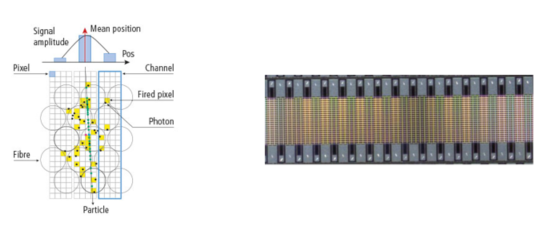
FIG. 1: Left - The photons produced along the trajectory of the particle are propagated to the fibre end and to the SiPM detector array. Each pixel of the detector can detect one photon. The colored pixels are pixels with signals. Right - 128-channel SiPM array produced by Hamamatsu.
Studying the B0s → (K+ π−)(K− π+) decay, the LHCb Collaboration obtained the first determination of the CP asymmetry of the (K+ π−)(K− π+) final state and measured 19 CP -averaged amplitude parameters.
For the first time, the mixing-induced CP violating phase Φs was determined using a b → dds transition. The value of this phase is consistent with both the SM expectation and the previous LHCb measurements. New measurements were recently published, obtained from the decay of charged or neutral B mesons to two charm mesons (mesons containing a quark c). The CP asymmetry in this channel has not been measured before.
- Confirmation
-
It looks like you're in the . If this is not your location, please select the correct region or country below.
You're headed to Hamamatsu Photonics website for GB (English). If you want to view an other country's site, the optimized information will be provided by selecting options below.
In order to use this website comfortably, we use cookies. For cookie details please see our cookie policy.
- Cookie Policy
-
This website or its third-party tools use cookies, which are necessary to its functioning and required to achieve the purposes illustrated in this cookie policy. By closing the cookie warning banner, scrolling the page, clicking a link or continuing to browse otherwise, you agree to the use of cookies.
Hamamatsu uses cookies in order to enhance your experience on our website and ensure that our website functions.
You can visit this page at any time to learn more about cookies, get the most up to date information on how we use cookies and manage your cookie settings. We will not use cookies for any purpose other than the ones stated, but please note that we reserve the right to update our cookies.
1. What are cookies?
For modern websites to work according to visitor’s expectations, they need to collect certain basic information about visitors. To do this, a site will create small text files which are placed on visitor’s devices (computer or mobile) - these files are known as cookies when you access a website. Cookies are used in order to make websites function and work efficiently. Cookies are uniquely assigned to each visitor and can only be read by a web server in the domain that issued the cookie to the visitor. Cookies cannot be used to run programs or deliver viruses to a visitor’s device.
Cookies do various jobs which make the visitor’s experience of the internet much smoother and more interactive. For instance, cookies are used to remember the visitor’s preferences on sites they visit often, to remember language preference and to help navigate between pages more efficiently. Much, though not all, of the data collected is anonymous, though some of it is designed to detect browsing patterns and approximate geographical location to improve the visitor experience.
Certain type of cookies may require the data subject’s consent before storing them on the computer.
2. What are the different types of cookies?
This website uses two types of cookies:
- First party cookies. For our website, the first party cookies are controlled and maintained by Hamamatsu. No other parties have access to these cookies.
- Third party cookies. These cookies are implemented by organizations outside Hamamatsu. We do not have access to the data in these cookies, but we use these cookies to improve the overall website experience.
3. How do we use cookies?
This website uses cookies for following purposes:
- Certain cookies are necessary for our website to function. These are strictly necessary cookies and are required to enable website access, support navigation or provide relevant content. These cookies direct you to the correct region or country, and support security and ecommerce. Strictly necessary cookies also enforce your privacy preferences. Without these strictly necessary cookies, much of our website will not function.
- Analytics cookies are used to track website usage. This data enables us to improve our website usability, performance and website administration. In our analytics cookies, we do not store any personal identifying information.
- Functionality cookies. These are used to recognize you when you return to our website. This enables us to personalize our content for you, greet you by name and remember your preferences (for example, your choice of language or region).
- These cookies record your visit to our website, the pages you have visited and the links you have followed. We will use this information to make our website and the advertising displayed on it more relevant to your interests. We may also share this information with third parties for this purpose.
Cookies help us help you. Through the use of cookies, we learn what is important to our visitors and we develop and enhance website content and functionality to support your experience. Much of our website can be accessed if cookies are disabled, however certain website functions may not work. And, we believe your current and future visits will be enhanced if cookies are enabled.
4. Which cookies do we use?
There are two ways to manage cookie preferences.
- You can set your cookie preferences on your device or in your browser.
- You can set your cookie preferences at the website level.
If you don’t want to receive cookies, you can modify your browser so that it notifies you when cookies are sent to it or you can refuse cookies altogether. You can also delete cookies that have already been set.
If you wish to restrict or block web browser cookies which are set on your device then you can do this through your browser settings; the Help function within your browser should tell you how. Alternatively, you may wish to visit www.aboutcookies.org, which contains comprehensive information on how to do this on a wide variety of desktop browsers.
5. What are Internet tags and how do we use them with cookies?
Occasionally, we may use internet tags (also known as action tags, single-pixel GIFs, clear GIFs, invisible GIFs and 1-by-1 GIFs) at this site and may deploy these tags/cookies through a third-party advertising partner or a web analytical service partner which may be located and store the respective information (including your IP-address) in a foreign country. These tags/cookies are placed on both online advertisements that bring users to this site and on different pages of this site. We use this technology to measure the visitors' responses to our sites and the effectiveness of our advertising campaigns (including how many times a page is opened and which information is consulted) as well as to evaluate your use of this website. The third-party partner or the web analytical service partner may be able to collect data about visitors to our and other sites because of these internet tags/cookies, may compose reports regarding the website’s activity for us and may provide further services which are related to the use of the website and the internet. They may provide such information to other parties if there is a legal requirement that they do so, or if they hire the other parties to process information on their behalf.
If you would like more information about web tags and cookies associated with on-line advertising or to opt-out of third-party collection of this information, please visit the Network Advertising Initiative website http://www.networkadvertising.org.
6. Analytics and Advertisement Cookies
We use third-party cookies (such as Google Analytics) to track visitors on our website, to get reports about how visitors use the website and to inform, optimize and serve ads based on someone's past visits to our website.
You may opt-out of Google Analytics cookies by the websites provided by Google:
https://tools.google.com/dlpage/gaoptout?hl=en
As provided in this Privacy Policy (Article 5), you can learn more about opt-out cookies by the website provided by Network Advertising Initiative:
http://www.networkadvertising.org
We inform you that in such case you will not be able to wholly use all functions of our website.
Close


